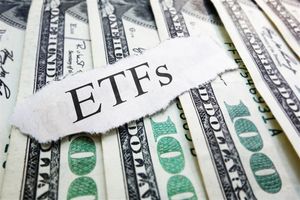Tobacco company Philip Morris International (PM), known for its iconic Marlboro cigarettes, is steadily shifting beyond the tobacco and nicotine segment and toward a smoke-free future through innovative products like iQOS and ZYN. After releasing its Q3 results, the company caught attention for raising its full-year guidance, signaling confidence despite some near-term headwinds.
For income investors, it’s easy to see why this stock has long been a favorite. Dividend-paying companies often offer stability and consistent cash flow, especially when markets get shaky. Philip Morris fits that bill perfectly. It has raised its dividend for over a decade, with its latest bump—a near 9% increase—bringing its yield close to 4%.
Still, the stock slipped post-earnings as expectations ran high. But some analysts remain optimistic, calling this pullback a favorable entry point.
If you are chasing growth, high-flying stocks might grab your attention. But for those looking for a steady income and less volatility, a dependable dividend stock makes more sense. So, with PM stock nearly 15.5% off its June high of $186.69, could this dip be the perfect entry point for a steady, income-focused addition to your portfolio?
About Philip Morris Stock
Philip Morris International, headquartered in Stamford, Connecticut, is one of the world’s largest tobacco companies. Spun off from Altria (MO) in 2008, PMI sells cigarettes and smoke-free products across global markets. With a workforce of over 83,000, the company is shifting toward a smoke-free future, using science and innovation to offer alternatives that aim to reduce harm for consumers, society, and shareholders alike. Its market capitalization currently stands at around $244.2 billion.
The tobacco stock might look like a shaky bet at first glance—smoking rates are falling worldwide, and traditional tobacco faces growing regulatory pressures. Yet when we look at the stock’s long-term performance, the picture tells a very different story. Since its public debut, PM has rallied nearly 212%, and with reinvested dividends, it has generated a staggering total return of 626%.
Over the past two years alone, PM stock has surged 68%, and in the past 52 weeks, it has climbed 12%. On a year-to-date (YTD) basis, the rally has been even more impressive, with shares up about 22%, rising nearly 36% from January lows of $116.12.
In the short term, the stock has shown more volatility. Over the past month, it slipped 10%, and on Oct. 21, PM dropped as much as 9.9% in pre-market trading despite strong earnings. The sharp swing was quickly corrected, and in the next trading session, the stock rebounded 3.2%, likely fueled by bullish analyst commentary. Trading volume on the earnings day surged past 21 million, highlighting heightened investor interest.
From a technical perspective, PM’s momentum indicators show intriguing signals. The 14-day Relative Strength Index (RSI) climbed, suggesting the stock is regaining buying interest after recent dips.
Meanwhile, the MACD oscillator indicates potential upward momentum, with the yellow MACD line crossing above the blue signal line, a classic bullish signal hinting that the recent pullback may be setting the stage for a fresh move higher.

Philip Morris is not exactly a bargain pick right now. The stock trades at 20.9 times forward adjusted earnings and 6.1 times forward sales, sitting well above both sector and historical averages. It’s the sort of premium investors are willing to pay for a company in transition—one moving beyond its cigarette past and reshaping itself around smoke-free innovation and steady global demand.
PMI’s Dividend Legacy
Even as Philip Morris reshapes itself around smoke-free innovation, its shareholder loyalty remains intact. The company has raised dividends for 18 consecutive years, and this September it paid a quarterly dividend of $1.47 per share. That’s an 8.9% boost, the largest since 2013. The forward annual dividend of $5.88, offering a 3.9% yield, surges past the S&P 500 SPDR’s (SPY) 1.09%. As interest rates ease, that yield becomes even more attractive.
A payout ratio of 74.7% signals that returning cash to investors is a priority, even with no share buybacks planned for 2025.
Philip Morris Tops Expectations With Strong Q3 Revenue and Earnings
Philip Morris lit up its third-quarter earnings on Oct. 21 with results that outpaced expectations. Yet the market’s reaction was a touch smoky, as despite strong numbers, the stock dipped with investors zeroing in on the company’s trimmed operating income guidance. Revenue came in at $10.8 billion, up 9.4% year-over-year (YoY) and 5.9% organically, powered by firm pricing in combustible tobacco and a continued push in smoke-free products. The company’s adjusted EPS jumped 17.3% annually to $2.24, comfortably beating estimates, thanks to record smoke-free profits and solid margins.
Behind the numbers lies a transformation story. The once cigarette-fueled titan is steadily reinventing itself around smoke-free alternatives—a move that’s clearly paying off. Smoke-free revenue surged 17.7% and 13.9% organically—now making up 41% of total sales. Its shipment volumes were up by 16.6%. The combustible side, while showing 4.3% growth, reflected the expected volume decline, cushioned by strong pricing gains. Cigarette volumes declined by 3.2% in Q3, close to the more favorable end of its 3% to 4% forecast decline for the second half of the year and reflecting better-than-expected dynamics in Turkey and Egypt. Total shipment volumes rose slightly to 204.9 billion units.
Adjusted operating income climbed 12.4% to $4.7 billion, buoyed by favorable pricing and product mix, though higher marketing and R&D expenses took a small bite. The company closed the quarter with $4 billion in cash, $46 billion in net debt, and a shareholder deficit of $9 billion—numbers that mirror the heavy investment phase Philip Morris is in.
Looking ahead, 2025 is shaping up to be another pivot year. Adjusted EPS is now forecast between $7.46 and $7.56, implying growth between 13.5% and 15.1%. The total cigarette and smoke-free product volume is expected to rise about 1%, fueled by a 12% to 14% surge in smoke-free units that should more than offset a 2% drop in cigarette volumes.
Organic revenue growth is pegged between 6% and 8%, while operating cash flow is expected to be over $11.5 billion and capital expenditures of about $1.6 billion—most of which will be directed toward fueling its smoke-free revolution. Furthermore, management estimates that the net debt-to-adjusted EBITDA ratio will improve, targeting a ratio of around 2x by the end of 2026.
Despite the strong numbers, management trimmed its operating organic income growth outlook to a 10% to 11.5% range, pointing to heavier U.S. investments largely concentrated in Q3. The company also flagged inventory adjustments tied to its ZYN product, which are expected to weigh on Q4 results, signaling a short-term trade-off for long-term market positioning.
Analysts monitoring the company project its EPS to be around $7.51, up 14.3% YoY, for fiscal 2025, with another 11.6% rise to $8.38 in fiscal 2026.
What Do Analysts Expect for Philip Morris Stock?
After Philip Morris dropped its Q3 report, Wall Street analysts quickly weighed in, and most see the recent dip as more of an opportunity than a warning sign. Goldman Sachs kept its “Buy” rating and a $200 price target, calling the sell-off “overdone.” Analyst Bonnie Herzog described the stock as offering “a nice entry point,” pointing to a long runway of accelerating growth driven by iQOS and ZYN’s expanding market presence.
Over at Stifel, optimism also held firm. The bank reiterated its “Buy” rating with a $180 target, viewing inventory-related slowdowns in heated tobacco and ZYN as temporary. Stifel expects Philip Morris to maintain its solid top-line and EPS momentum compared to peers, noting that its strong brand equity and pricing power remain key advantages.
Even Morgan Stanley, while trimming its target to $175, kept an “Overweight” stance. The firm acknowledged investor worries about slower ZYN growth and promotional pressures but remains bullish on Philip Morris’s smoke-free shift. Highlighting smoke-free products’ revenue growth, with IQOS’s international momentum and the anticipated U.S. rollout in mid-2026 setting the stage for stronger earnings ahead. Morgan Stanley sees ZYN’s short-term drag as more optical than structural, reinforcing that the company’s transformation story is far from over.
The stock has a consensus “Moderate Buy” rating overall—showing faith in Philip Morris' resilience, though not without restraint. Out of 15 analysts covering the stock, nine recommend a “Strong Buy,” two tag it as a “Moderate Buy,” and four analysts stay cautious with a “Hold” rating.
The average analyst price target for PM is $193.46, indicating a potential upside of around 32%. Meanwhile, the Street-high target price of $220 suggests that the stock could rally as much as 50%.
Final Thoughts on Philip Morris
Philip Morris definitely sparks mixed opinions out there, and it is easy to see why. Some folks worry about volume swings, regulatory hurdles, and how consumers are shifting away from traditional cigarettes. But PM has been quietly playing the long game. Its smoke-free products, from heated tobacco to oral nicotine, are gaining traction, and U.S. markets, though tricky, still hold massive upside.
Regulation—believe it or not, it actually strengthens their moat by keeping small competitors out. Add in solid cash flow, margin growth, and nearly two decades of dividend hikes, and it is clear PMI is evolving. Sure, short-term bumps will stir debate, but for investors who value steady income and innovation-driven growth, PM remains a stock that quietly delivers, year after year. It’s a classic mix of stability and long-term potential.

On the date of publication, Sristi Suman Jayaswal did not have (either directly or indirectly) positions in any of the securities mentioned in this article. All information and data in this article is solely for informational purposes. For more information please view the Barchart Disclosure Policy here.
More news from Barchart





